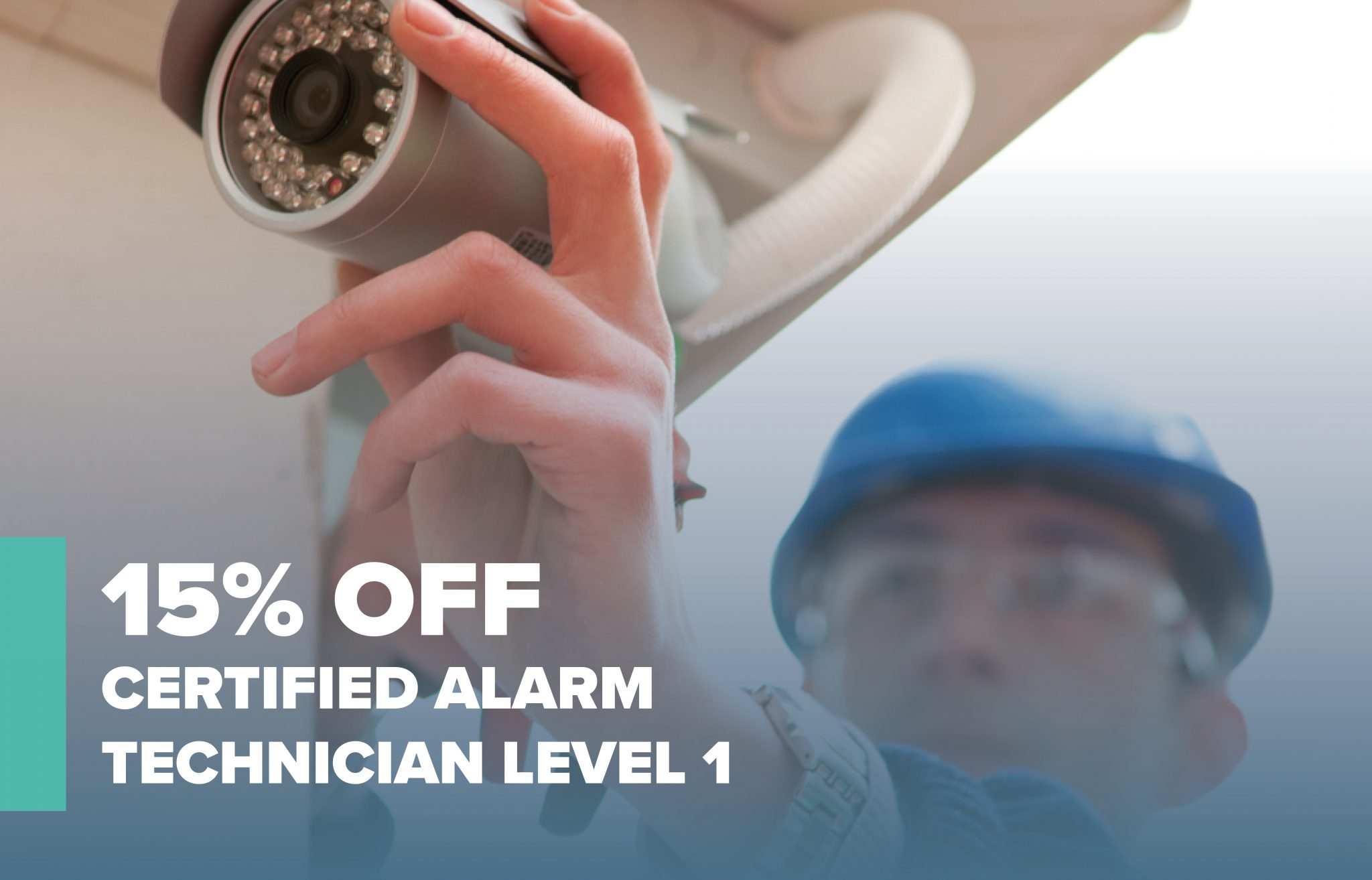
ESA Fire Certification Offers Smoother Alternative to NICET
For businesses that design and install fire alarms, making sure that technicians are trained and credentialed entails a significant allocation of resources. Typically, states that require certification approve NICET certifications for fire alarms. The process to obtain NICET certification can be a tedious and inefficient process.
“There are not a lot of training opportunities that allow techs to learn the information needed and let you achieve a NICET certification equivalent at the end of the course and there are none where you can actual achieve NICET certification at the end of the course without going through NICET ,” remarks Casey Williams, Senior Product Enablement Manager at ADT Commercial. “There are training classes that prepare you for the NICET exam: teaching you where to find the answers by helping you learn how to navigate the code, but the goal in those classes are not usually to meant for content retention but primarily to help prep you for the exam.”
“The ESA program offers training classes that prepare you for the test: teaching you the answers, not teaching you how to answer.”
Pat Allen, Director of Compliance and Business Development at ESA, explains what differentiates ESA’s fire certification process. “We add training to the testing and credentialing,” she says. “NICET gives them a suggested list of materials to study for the test, whereas we actually put them through fire alarm training courses.”
ESA’s flexible training options allow techs to learn valuable information, use it in the field in real time, and succeed at testing. Currently approved by twelve jurisdictions across the country, ESA’s fire alarm certification process is designed to support subject matter expertise.
“ESA has a ‘care factor’ where they are invested in the success of the technicians in the programs. They prep you for success,” says Joel Norris, Inspection Manager at Guardian Security Systems in Washington. “Whereas the NICET office doesn’t communicate well, ESA is user friendly. ESA teaches the code rather than teaching you how to memorize the code just to pass the test.”
For states like Washington, where the fire alarm industry must abide by many regulations, waiting for NICET certifications to get approved can put a chokehold on getting techs onto the job site. Not only does this impact a business’s ability to serve their customers well, but it also damages their bottom line. ESA’s Certified Fire Alarm Technician and Certified Fire Alarm Designer program can process qualified applicants’ certification requests in a matter of weeks instead of months.
“We pride ourselves on the training component and the service component where we really look to make the process of getting credentialing easy, quick, and efficient,” notes Michelle Yungblut, ESA’s Chief Knowledge Officer.
To put together training courses, ESA works closely with subject matter experts who are well-versed in the codes and standards for commercial and residential fire alarm systems, including NFPA 72, life safety codes, and building codes. ESA also consults fire marshals to make sure the program aligns with their expectations and collects their feedback to make enhancements to the curriculum and training materials as needed. They also get input from ESA’s Codes and Standards Committee.
“That is a great connection; we have access to a lot of resources because our volunteers sit on code-writing panels,” Yungblut notes. “Because those committee members play a part in writing fire codes, we stay updated on what information the techs need to know and should be tested on.”
Yungblut says that part of ESA’s diligence is because they want to give fire alarm installers an opportunity to grow in the field. “We emphasize creating a pathway so folks in the fire alarm installation and design world can start with fundamentals and move on to the high-level planning and design stages.”
This is a benefit for companies like Guardian Security, where they see ESA’s training courses as a way to retain employees and help them build a career path. Even in states where certification is not required, ESA training can boost the proficiency and credibility of fire alarm installers.
“The caliber of technicians who really want to be employed by Guardian Security Systems – really want to be in this industry – are driven. This is not a fly-by-night job,” says Norris. “ESA helps us give them a career path because we can give them the professionalism and the information they need to succeed in this industry.”
Williams, who is also an ESA technical trainer, says. “One of the biggest benefits of ESA’s program is career progression,” he says. “Getting the certifications needed to grow in the industry is a huge benefit.”
Career progression is a benefit to companies as well. “The knowledge that we share and the experience we have in the field set us apart from our competitors,” Norris notes. Williams describes ways that training and certification have helped ADT Commercial grow and succeed as a business:
“When we invest in our employees like this, it increases our ability to take on jobs with confidence that the techs have the knowledge need to do their job well along with certification to validate that. It also improves the skillset of our techs. We see work quality improve; we see speed increase. They learn how to become a better installation or service technician from learning good standards and practices and having the knowledge on how to do it right the first time. We see a visually that quality is better, which reduces company costs because we don’t have to go back to jobs to fix poor workmanship. This improves customer relationships, and helps us take on national accounts, because we know that every job is going to be done in the exact same way no matter what state they’re in.”
The flexibility of ESA’s training courses is an asset in an industry where those who need training spend most of their time in the field.
“Techs have to be in the field,” Williams puts it plainly. “Very rarely is there a training or certification opportunity you can achieve without pulling people out of the field. It takes time for techs to learn their job and achieve the knowledge that they need, and then they have to study for the tests.” In addition, “most of the people who gravitate toward the installation side of the business typically aren’t trying to learn from a book,” he points out. “They need to touch and see something to understand it.”
ESA has several options for training, enabling trainees to choose the experience that benefits them the most. Online courses support self-paced learning. Those who prefer a more interactive format can opt for live, instructor-led classes that can be held virtually.
“ESA lets trainees choose the best learning path – everyone has their own way of learning, and this gives them the ability to learn in the way that best fits them,” Williams comments. “The program lets them consume knowledge in the e-learning aspect and incorporate it in their daily tasks. It works in tandem with field techs being trained in the field by already-certified field techs. Because they learn the content while they’re still working, they can ask their mentor about things that have come up in class.”
Norris sums it up. “All around, it’s a great program.”
Click here to learn more about ESA’s fire training and certification, including which states and jurisdictions allow ESA certification in lieu of NICET.








